A concerted effort should be made globally for germline preservation of marine algal species
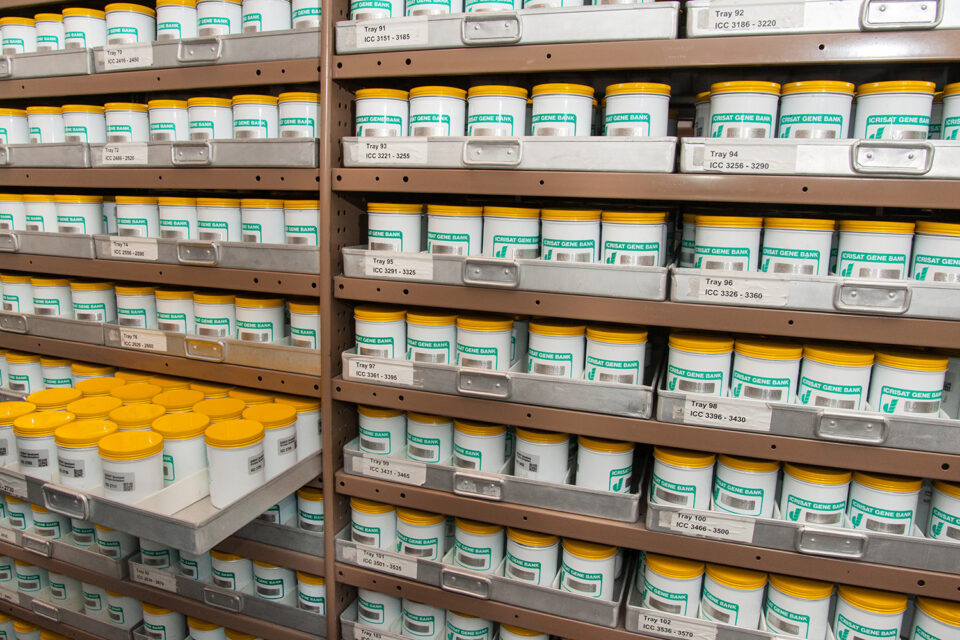
Worldwide, biodiversity is declining and the marine environment is no exception, with increasing sea surface temperatures leading to drastic alterations in marine populations, communities and ecosystems. Of particular concern is the potential for loss of macroalgae, which function as ecological engineers, primary producers, habitat and structure providers, nutrient cyclers, keystone species, food and nursery grounds for invertebrates and pelagic organisms, and shoreline buffers from storms. Furthermore, macroalgae are a (U.S.) $11 billion industry as food, animal feed and fertilizers.
Seaweeds are under threat from multiple stressors, including warming sea surface temperatures, pollution, overharvesting and other anthropogenic disturbances that have major consequences for the structure and function of near-shore coastal ecosystems. Although seaweeds are predicted to function photosynthetically well with increases in carbon dioxide (CO2), their distributions within their local communities (i.e., occupied tidal zone) and globally (i.e., latitudinal range) are likely to be impacted by increased temperature, threat of desiccation and other environmental factors that are predicted to be affected by climate change.
The most serious potential consequences include both localized and complete extinction that in turn results in loss of genetic diversity, ecological function, and services provided by marine photoautotrophs [organisms that use light energy and inorganic carbon to produce organic materials]. Furthermore, climate change can open opportunities for increased invasion by nonnative seaweeds. Given the historical importance of the mariculture industry and its continued growth globally, these effects in the coastal environment will become more pressing for humankind.
This article – adapted and summarized from the original publication (Wade, R. et al. 2020. Macroalgal germplasm banking for conservation, food security, and industry) – provides a brief introduction to macroalgal germplasm banking and its application to conservation, industry, and mariculture, and argues that a concerted effort should be made globally in germline preservation of marine algal species via germplasm banking with an overview of the technical advances for feasibility and ensured success.
Macroalgae aquaculture
Wild harvest of macroalgae has a longstanding history in many cultures, particularly in Asia, Polynesia and South America. Modification and enhancement of wild stocks began as early as the 17th century in Japan. Today, more than 200 species of macroalgae are wild harvested for various industries, but only a dozen are currently commercially cultivated, with most production taking place in Asian countries. As global aquaculture continues to increase, the blue economy – a term used to describe the use of ocean resources for economic growth – needs to evolve sustainably to support marine ecosystem function and rejuvenation.
One ocean: At the intersection of green energy and a blue economy
Much of the innovation in macroalgae aquaculture optimization comes from Asia, although other international leaders in the industry have begun to explore its use for biofuel production. However, there are still several unpredictable challenges to be overcome before the emerging algal biofuel industry is of considerable value and impact worldwide, particularly disease mitigation, ecological impacts of large-scale aquaculture, the evolution of regulatory practices, market development and the optimization and economical production of biofuel from algal polysaccharides. Additionally, the preservation of strains utilized in these industries is an important strategy for maintained productivity and commerce.
Long-term storage of different life stages
Ex situ [off-site conservation] seed banking preserves the embryonic stage of the plant lifecycle. This stage is optimal for preservation because of its evolved traits that facilitate long-term dormancy in natural conditions (e.g., nutrient-rich, robust seed coat, specific germination requirements). Conversely, algal germplasm banking (referred to as biobanking elsewhere) more resembles methodology utilized for long-term storage of non-flowering land plants where either spores or haploid gametophytes [egg or sperm] are stored. The cells or tissues targeted very much depend on the species, as the longevity of seaweed microscopic stages is related to the seaweed life strategy that will resume development when returned to adequate conditions.
Culturing techniques and hatchery methods have been well developed for a variety of species, particularly for economically important species (e.g., Chondracanthus chamissoi, Porphyra yezoensis, Saccharina spp.), but long-term storage protocols are less commonly available. Thus, we recommend that liquid cultures held under dormancy conditions (e.g., reduced light and temperature) be prioritized for long-term germplasm preservation as a methodology that can be more quickly implemented given the current availability of algal preservation protocols.
Food security, conservation and innovation
Germplasm banks represent the opportunity to provide long-term preservation of important macroalgal strains and their diversity, and germplasm material can be used as starting points for the generation of optimized lines via both direct and indirect synthetic biology advances.
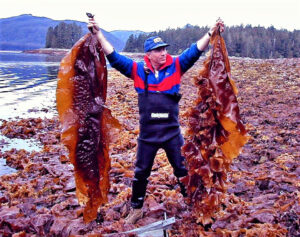
Germplasm collections can also be the lasting references of historical distribution data, particularly in the context of invasive species identification. Preserving macroalgae strains and cultures provides an incredible source of material for industrial and research applications.
Algae are also raw material for innovations in biofuel refinement, pharmaceuticals, cosmetics, textiles and animal feeds. Strains with complete genotype and phenotype profiles offer great starting points as model systems for numerous research possibilities, including optimization of biorefining pipelines, development of new macroalgal products and byproducts, and exploration of macroalgal applications for climate change mitigation.
Given the breadth in germplasm bank utility and value, one of the greatest challenges is identifying which species to prioritize; with estimates in algal diversity ranging from 72,500 to 170,000 species, complete representation is daunting. Because of this challenge, we recommend prioritization in the following three ways: (1) economic importance, (2) ecological importance and (3) evolutionary importance. Perhaps the most easily prioritized species are those that are currently grown in aquaculture systems.
Economically important species should be prioritized to not only preserve optimized strains currently used but also conserve their genetic diversity to maintain their utility over time. Species that provide crucial ecological services (and are therefore regarded as foundational keystone species) should be prioritized for germplasm banking. Particularly canopy- and habitat-forming species in the brown algal orders Laminariales and Fucales should be targeted for research and sampling of genetic diversity. And those that provide support and structure of benthic communities, such as coralline algae (Rhodophyta) should also receive prioritization for preservation.
Species that are of evolutionary value should also receive attention for germplasm banking; evolutionary importance can be interpreted as those that have broad geographic ranges and/or exhibit warm temperature tolerance and, therefore, resiliency to climate change. Similarly, species that exhibit regular or perhaps even increased growth and fitness in response to increased dissolved carbon availability and decreased nutrient availability should be targeted.
International cooperation, collaboration
Despite a fast-growing interest in commercial aquaculture, corresponding with a rapidly increasing global demand for nutrition supplementation and industry raw material, few researchers outside of Asia have explored sustainable domestication programs, including the creation of macroalgae germplasm banks. Several facilities have dedicated infrastructure and research to the maintenance of commercially important macroalgal species and cultivars. But it is likely that these banks, although incredibly useful, are lacking in not only their intraspecific diversity but also overall species diversity. The burden to prioritize and value macroalgal conservancy should not be placed on these few banks, and there must be international recognition of the importance and utility of macroalgal germplasm preservation.
Without international buy-in to macroalgae as an important component of mariculture, the global industry faces the steep hurdle of implementing a sound, eco-centric framework with which to grow sustainable and economically viable macroalgae products. We suggest the following in order to achieve the initiation of such an international cooperative: (1) Legislative/government officials must support and champion such an initiative at the national level; (2) the cooperative units must agree on at least broad categories, as those suggested previously, of species that should be prioritized worldwide; and (3) the cooperative units must agree to share germplasm collections in order to provide replication and ensure the survival of the collections.
Although optimized aquaculture strains are usually owned privately, at least replication of wild strains and representation of overall biological diversity should be accepted unanimously. The precedence for resource sharing is set by the Nagoya Protocol, whose obligations described there within, should be upheld and followed for germplasm banks as well. Additionally, suggestions described by the PHYCOMORPH European Guidelines for A Sustainable Aquaculture of Seaweeds protocol for regional to national coordination should be considered and implemented to encourage fine-scale collections.
In particular, initiatives that incorporate buy-in and management by current aquaculturists and professionals working in marine products, such as the small, localized cooperatives that are managed by fishermen seaweed farmers in Japan, should be prioritized as infrastructure as the national level is constructed. In summary, we promote that support and management of germplasm at every level (i.e., local, state, regional and national) will be essential to the success and longevity of macroalgal germplasm banks.
Genetic profiling and its challenges
A major obstacle to the creation of a wide and possible macroalgal germplasm bank involves the documentation and understanding of the genetic variation in coastal macroalgal communities and how genotype influences each organisms’ phenotype and its functional importance within the ecosystem. Loss of seaweed genetic diversity through poor commercial breeding programs has led to yield declines globally; therefore, maintaining wild or “heirloom” strains is critical for continued yield success of cultured seaweed and for maintaining diversity and ecosystem function globally.
Major challenges of documenting genetic diversity across distributions have included not only considerable collection costs but, historically, impeding sequencing costs as well. However, work done over the past 30 years with increasingly economical sequencing approaches has made important progress in our understanding of genome evolution, genetic diversity, population structure and ecosystem dynamics in commercially and ecologically important macroalgae.
A well genotypically characterized germplasm bank can provide a wealth of information for macroalgal varieties, breeding lines, and has been developed for several strains in Asia and is currently underway at several facilities in North America and Europe. These germplasm collections will serve as a valuable tool both for future conservation and aquaculture efforts and will only increase in impact with increased support for facilities, infrastructure, and breadth of culture collection.
Perspectives
We emphasize that international and national programs that are currently supporting terrestrial plant seed banks (e.g., Crop Trust, Plant Conservation Alliance, Seeds of Success) botanical gardens and others) should equally support macroalgal germplasm banking efforts. Building a global network and coordinated initiative to build and maintain these collections is vital to supporting the Blue Revolution and continued mariculture advancement. By incorporating macroalgal germplasm banks into these efforts, we support not only human food security and industry but also the ecological function and services provided by marine primary producers.
We also recognize that the ideas presented here are not necessarily novel; it is important that recognition of documents like PEGASUS be given. But given the very recent interest in seaweed mariculture outside of Asia and Europe, it is important that conversations surrounding cooperative and thoroughly characterized macroalgal germplasm banking begin as soon as possible, and the ideas presented here continue in their development as a living concept.
Now that you've reached the end of the article ...
… please consider supporting GSA’s mission to advance responsible seafood practices through education, advocacy and third-party assurances. The Advocate aims to document the evolution of responsible seafood practices and share the expansive knowledge of our vast network of contributors.
By becoming a Global Seafood Alliance member, you’re ensuring that all of the pre-competitive work we do through member benefits, resources and events can continue. Individual membership costs just $50 a year.
Not a GSA member? Join us.
Authors
-
Rachael Wade, Ph.D.
Corresponding author
University of Wisconsin Milwaukee, Milwaukee, Wisconsin, United States of America[117,100,101,46,109,119,117,64,114,101,100,97,119]
-
Simona Augyte, Ph.D.
University of Connecticut
Stamford, Connecticut, United States of America -
Maddelyn Harden
Ph.D. Student
University of Southern California
Los Angeles, California, United States of America -
Sergey Nuzhdin, Ph.D.
University of Southern California
Los Angeles, California, United States of America -
Charles Yarish, Ph.D.
University of Connecticut
Stamford, Connecticut, United States of America -
Filipe Alberto, Ph.D.
University of Wisconsin Milwaukee
Milwaukee, Wisconsin, United States of America
Tagged With
Related Posts
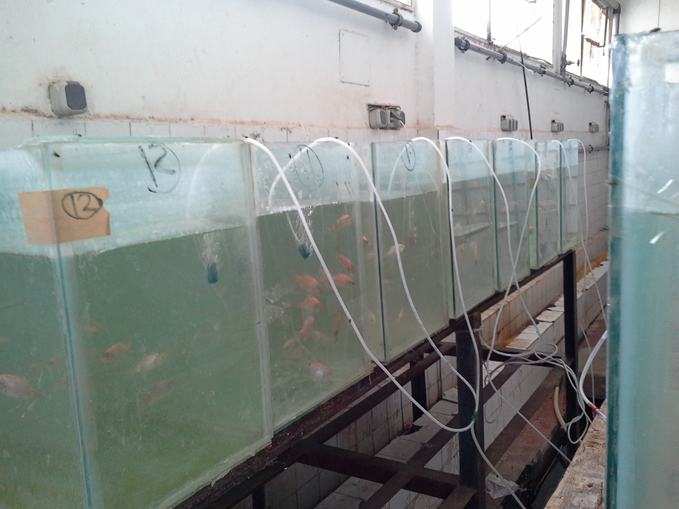
Health & Welfare
Applied commercial breeding program for Nile tilapia in Egypt
A major goal of selective breeding program for Nile tilapia (Oreochromis niloticus) in Egypt is to select for fillet color and fillet weight in response to consumer preferences.
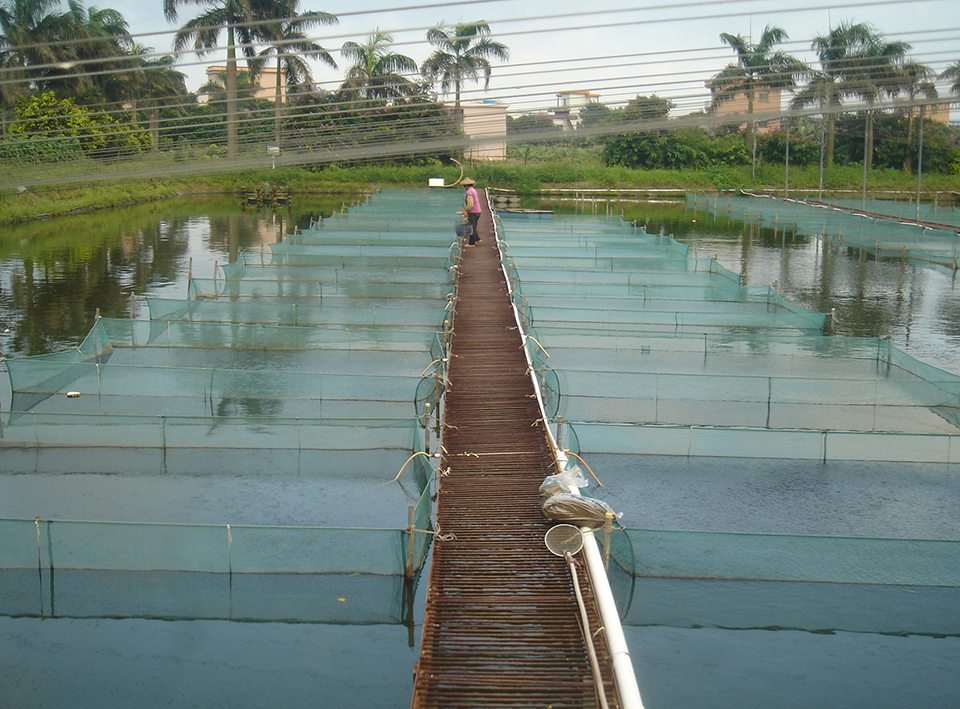
Health & Welfare
China’s tilapia germplasm: Chance and challenge
China’s expansive tilapia culture industry is based on exotic species introduced continuously since 1956. Technical advances for improving the limited germplasm are expected to aid the industry.

Health & Welfare
Genome editing: Potential to improve aquaculture breeding, production, Part 1
Due to high fecundity and external fertilization, most aquaculture species are amenable to genetic improvement technologies, including genome editing.
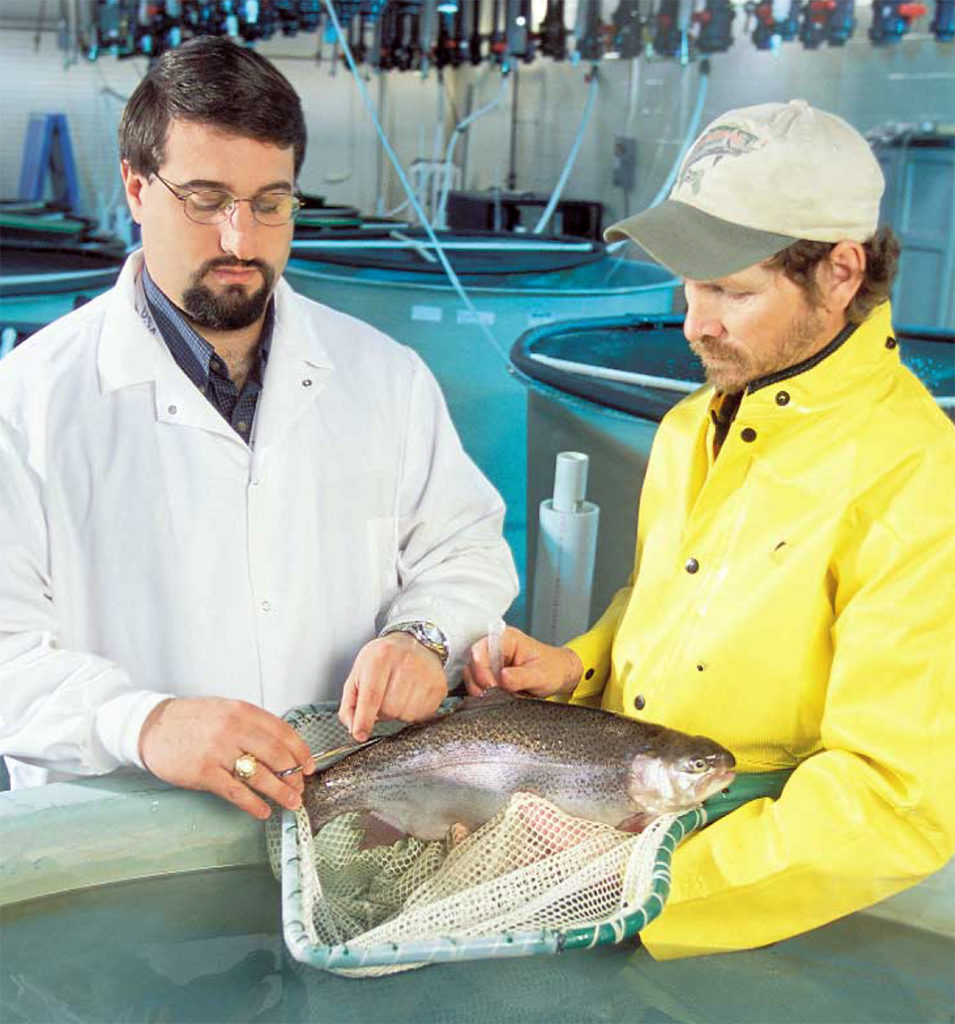
Health & Welfare
Genomics: Applications in salmonid aquaculture
Advances in aquaculture research include the integration of genomics – the study of genes and their functions – into projects pursuing increased production efficiency.


